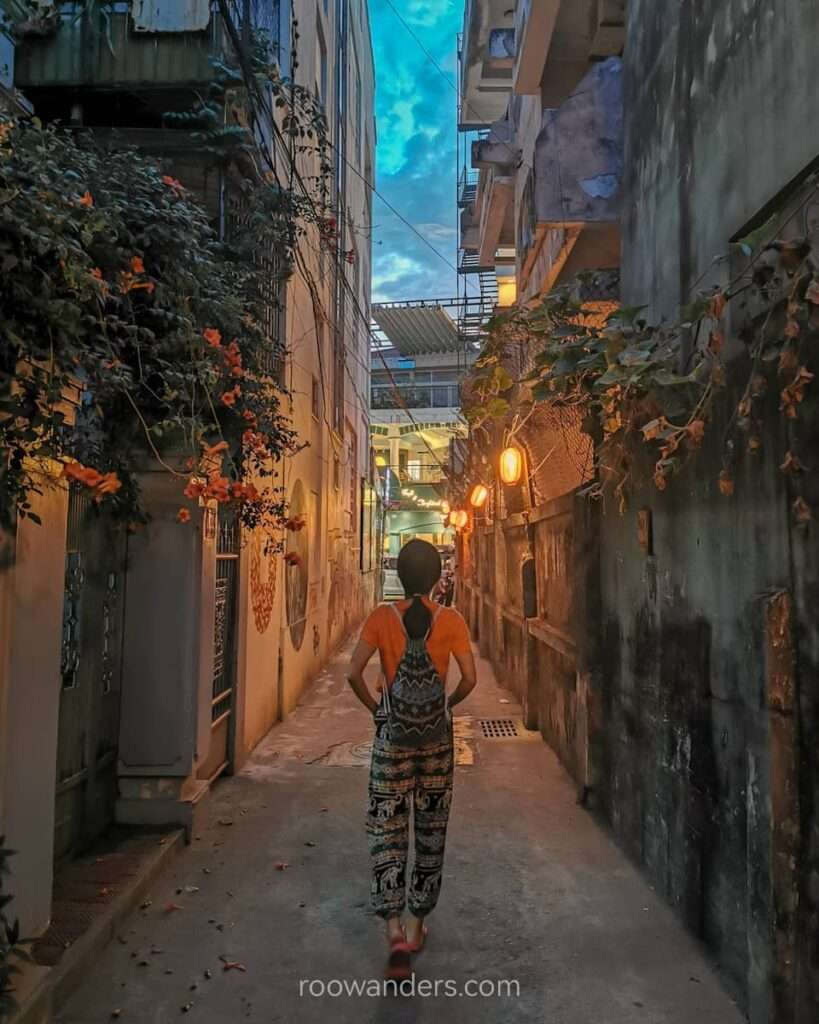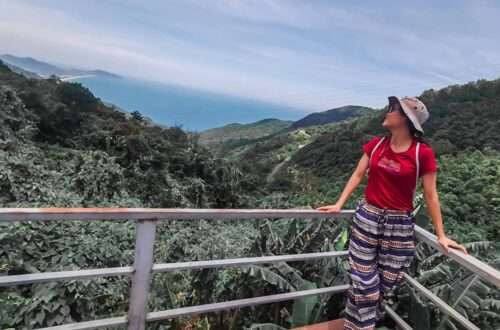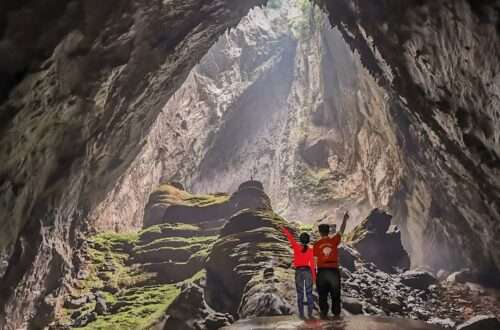
DMZ: Through The Vietnamese Demilitarised Zone
The Vietnamese Demilitarized Zone, a place of significant historical value, is not what most travellers in Vietnam might have considered when planning their itinerary.
Unless you’re keen on visiting the remnants left behind of the Vietnam War, you wouldn’t pay particular attention to this peaceful and quiet countryside. Then again, DMZ wasn’t as highly advertised as the Cu Chi Tunnels. And between the gorgeous mountains in the North and the relaxing beaches in the South, why would someone short on vacation days stop by the DMZ?
But having seen the artefacts in the War Museum of Ho Chi Minh City and squeezed through the narrow passages of Cu Chi Tunnels a year earlier, I thought a visit through some stops in the DMZ a must-do to learn more about the Vietnam War. Especially so when it is on our way from Phong Nha to Hue.
I visited Laos a few months later and took the opportunity to further my learning of the aftermath of the Vietnam War in Laos.
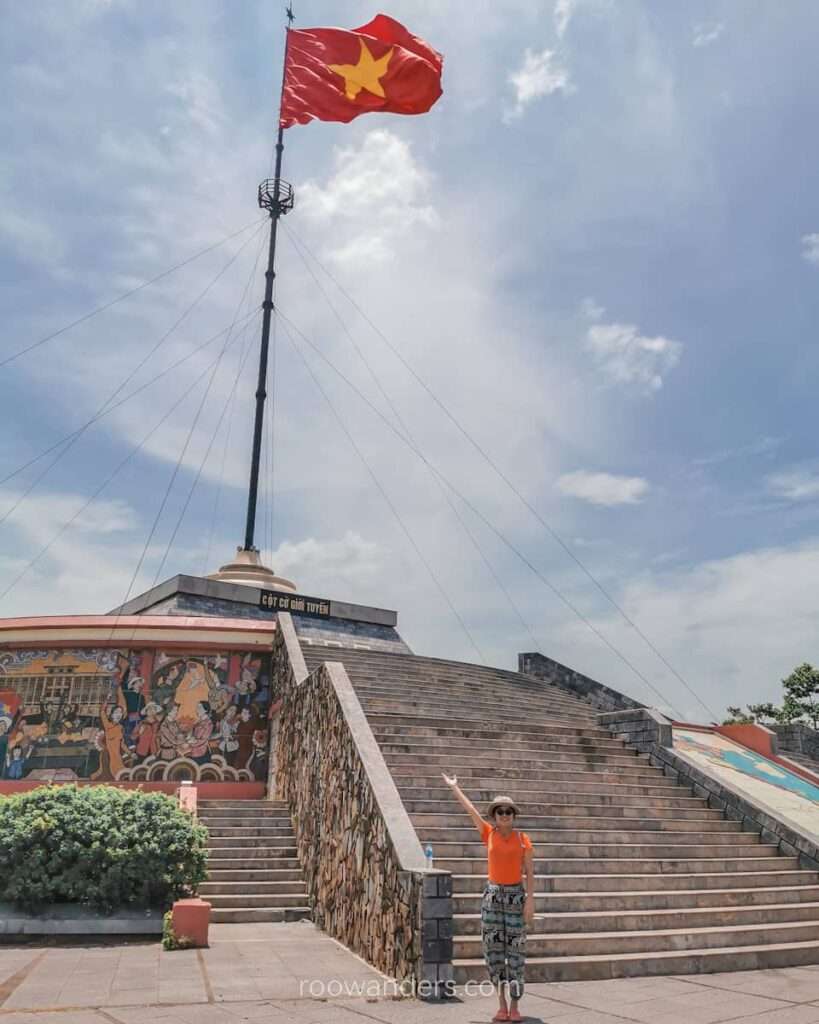
I visited DMZ in August 2023. This post may be updated periodically. Post also contains affiliate links that cost nothing to you but support my blog. Cheers!
About The DMZ
The demilitarised zone in Vietnam, running along the 17th parallel (on Earth’s equatorial plane), was the split between North and South Vietnam during the Vietnam War.
Situated about 100 km north of Hue in the Quang Tri province, this 5 km piece of land on either side of Ben Hai River acted as the war-free buffer between North and South from the 1950s to 1970s. But that does not spare it from endless bombings and casualties.
There are several stops to drop by in the Quang Tri province – buffer in a long day if you’re visiting all. Hire a guide as well if you would like a comprehensive tour. For our trip, we visited Hien Luong Bridge over the Ben Hai River, Vinh Moc Tunnel and Our Lady of La Vang Basilica.
Ways to Travel to DMZ
There are several operators in Hue with day tour buses to the DMZ. For those travelling from the North to the South, e.g. Phong Nha or Dong Hoi like us, your best bet is hiring a private driver. We went with one for a half-day trip ending in Hue.
Tours of such nature aren’t that popular in Vietnam, vis a vis other attractions, hence it was tough luck for us to find a tour group in Phong Nha. All tour agencies we approached advised us to chauffeur a private ride instead since the demand was next to none. When most tourists visit Vietnam for its nature, food and temples, getting a private hire was what we had to go with.
The cost isn’t that exorbitant if you could find more people to go with. Our private ride cost 2400k dong for a half day in a comfortable 4-seater sedan from Phong Nha to Hue. A full-day tour in the same direction with more stops in between would cost another 500k dong more.
Best Time to visit DMZ
Visit Central Vietnam during the dry season from February to March.
Rainy season begins from September to November, making it risky to travel in Central Vietnam due to heavy downpours and floods. Central Vietnam had one of the worst floods in years in October 2020.
May to August is summer time and can get extremely hot. My visit in mid-August was so hot I could see heat waves from the tarmac.
December and January might still see rain episodes from the dwindling rainy season. But this is also the peak holiday season and prices might soar. Book your accommodations and transport or tour tickets early if you’re visiting!
Stops through DMZ
We began the day late at 10 am in Phong Nha Ke Bang National Park. A sleep-in in an air-conditioned room with soft beds was much needed after spending some humid and hot days hiking in the biggest cave in the world. We arranged to meet our driver at Oxalis HQ, as our accommodation (Chay Lap Farmstay) was too ‘out of the way’.
Hien Luong Bridge & Ben Hai River
Our first stop took almost two hours over 110 km from Phong Nha to Hien Luong Bridge.
Crossing Hien Luong Bridge effectively puts you into either side of Vietnam. There are a few attractions to wander into – a giant flag pole, a union house and a museum. The museum is on the opposite of the highway.
If time permits, you could walk over to the southern side to tour the monument park.
Ticket costs 50k dong from a small counter by the flagpole.
Flag Pole
I’ve seen several giant flag poles/ towers during my two-week Vietnam trip – in Hanoi by the Thang Long Citadel, by the mausoleum, and on top of the forbidden city in Hue.
But this flag pole by the bridge was the biggest and grandest I’ve seen. I later learnt that the two warring sides during the Vietnam War tried to out-compete each other with the height of their flag poles. The higher it is compared to the enemy, the better it is – a symbol of pride and morale booster. The flag was replaced multiple times during the war, totalling over 260 times!
Paintings depicting peace after war surround the foundation of the flagpole. The steps up the foundation have a map of Vietnam printed on colourful tiles.

Union House
Don’t be spooked by the dolls sitting in the main room of the beautiful stilt house. They, featuring Vietnamese, Americans, and an Indian, seemed to be having a serious discussion.
Check out the historical photos about the colonial uprisings and subsequent Vietnam War, before dashing out of the house for some fresh air. Be warned, the house smells musty and heavy like mould!



Museum
We crossed the highway to the museum. Two original loudspeaker trumpets adorned the sides of the museum. A golden Uncle Ho greeted us as we entered the building.
The museum is only one big room with Uncle Ho’s statue and a wall behind him in the middle of the chamber. Artefacts such as photos, old books and artillery shells lined around the spacious room. However, as with the stilt house, ancient fans cooled the room so it smelt dank and mouldy as well.



Old Bridge
The reconstructed bridge and gate sit next to the museum. If time permits, you could walk to the other side for a better look at the monument of a woman with her children on the opposite bank.
She and her children – named the Desire for National Reunification monument – represent the families of a separated Vietnam longing for reunification for more than two decades.
The two-coloured bridge painted baby blue from the North and pastel yellow from the South represented the split.
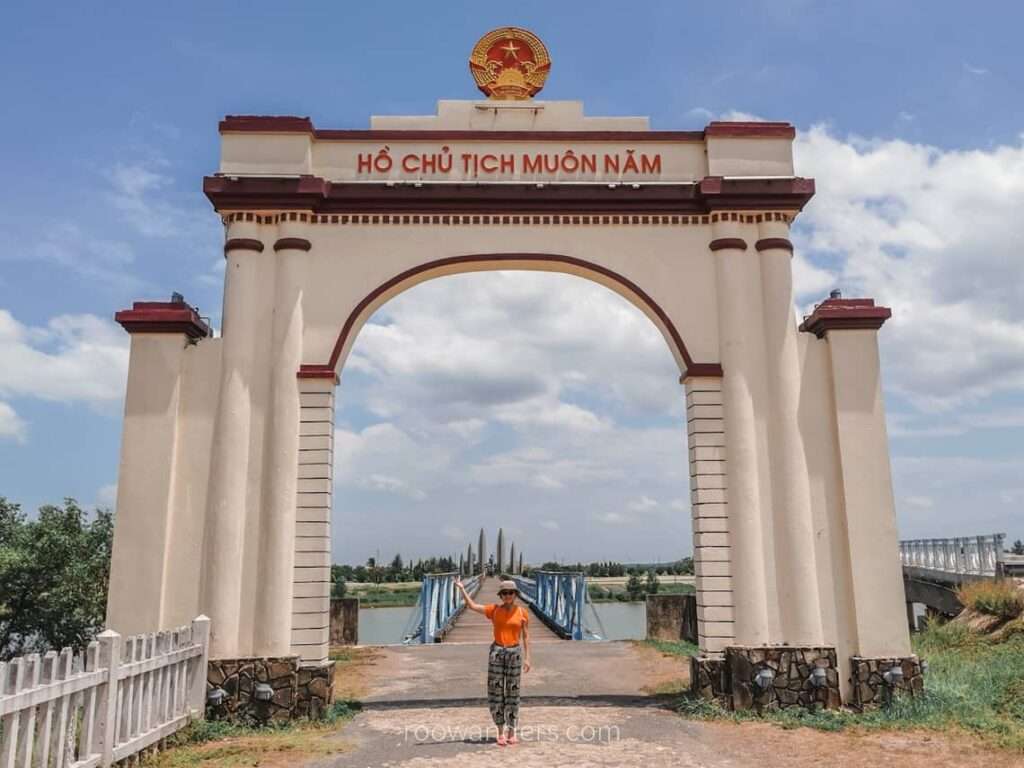
Vinh Moc Tunnels
We travelled another 30 minutes to the Vinh Moc Tunnels – a massive network of tunnels that used to house a coastal Vietnamese village that went underground to escape American bombings. The tunnels were extensive and very different to the tunnels of Cu Chi.
Tickets cost 50k dong per person. The aunties manning the drink stalls would advise you to start from Entrance 3, and also buy a drink from them.


Vinh Moc vs Cu Chi
Unlike the Cu Chi Tunnels, which were primarily constructed for warfare, hence the narrower and lower tunnel ceilings, those in Vinh Moc are spacious for an average Vietnamese living in those times. I could stand upright without hunching or squatting like in the Cu Chi Tunnels!
Vinh Moc Tunnels are also built deeper underground, with depths ranging from 10 m to 30 m! The entrances are bigger too – you could walk in without squeezing or lowering yourself into hip-width openings. Some exits lead to a beautiful coast overlooking the sea.



Within Vinh Moc Tunnels
There are numerous entrances into the tunnel, but not all are well-kept or lighted. Best to bring a torch or headlight and mind your steps, which can be muddy and slippery! We saw a pseudoscorpion along the way near an entrance and tried to move as far away from it as possible, thinking it was the real poisonous scorpion.
Vinh Moc Tunnels has plenty of ‘rooms’. There were spaces carved out for a family of four, a big chamber known as the cinema, and places for showering (it faces another space containing a well), cooking and delivering babies.



Non-subterranean Exhibitions
Apart from the tunnels, there’s also a museum containing artefacts from the tunnels, such as an ancient movie projector that might have shown movies in the cinema room, and photos depicting lives back then. What’s especially striking for me was the wall-to-ceiling painting illustrating a war scene, complete with a painted warplane and bombs hanging from the ceiling.
We also visited a video room showing a short documentary of Vinh Moc Tunnels – a nice respite from the terribly hot afternoon sun.



Our Lady of La Vang Basilica
Our last stop before Hue was the Lady of La Vang Basilica or the La Vang Holy Land. It is unrelated to DMZ but is an attraction within Quang Tri province.
I would have loved to visit the religious site, having read about its interesting origin. But the time of our visit coincided with the Assumption of Virgin Mary. Our driver couldn’t stop, and even if he did, he was worried we would be lost in the sea of people.

The whole street was jammed with police cordoning some areas. The traffic was moving at a snail’s pace. There were lots of people heading to the Basilica. With that many folks praying and celebrating the event, popup stalls and hawkers sprang up for business selling food, bamboo carpets and toys. Any empty spaces within the site became parking spots for tour buses from all over Vietnam.
Our driver commented that witnessing such a large crowd in an otherwise quiet church was also a first for him. He won’t be surprised if some of the surrounding hotels were booked for weeks, and that some may have flown from overseas since the pandemic had thwarted their visits.
Well, that’s another form of experience.
This visit to the Basilica reminded me of my journey to Simala Parish Church in Cebu. As with Our Lady of La Vang, worshippers pray to Mama Mary in Simala.
Origin of The Basilica
The Basilica of Lady of La Vang is an important pilgrimage site for Vietnamese Catholics.
It was mentioned that in 1798, a group of Catholics sought refuge in the jungle of Quang Tri during the time of King Canh Thinh. The King, fearful that the ‘French-imported’ religion might weaken his rule, was determined to eradicate them as a preventive measure.
As the refugees hid in the jungles, many fell sick due to the harsh environment. Nonetheless, they continued to pray every night at the foot of a banyan tree.
One night, on a branch of the same tree, a lady dressed in white ao dai carrying a child appeared with two angels beside her. The Catholics interpreted her as the Virgin Mary and the infant Jesus Christ. They said the Lady taught them remedies to cure diseases and blessed them.

Thereafter, in 1802, the Catholics returned to their village and passed the story of the apparition. It spread far, and soon, a chapel was built in 1820 for pilgrimages hailing from all over the region.
Catholicism in Vietnam received another blow between 1830 and 1885, leading to the decimation of Catholics and the eventual destruction of the chapel.
A new chapel was built in 1886. A Pope recognised the church as a basilica in 1961.

Then came the Vietnam War, which partially destroyed the basilica.
It underwent several reconstructions over the years, including a new chapel in 2012 to accommodate more pilgrims.

Other Stops We Did Not Visit
Here are some more stops related to DMZ for a complete full-day tour.
Ho Chi Minh Trail
The Ho Chi Minh Trail, which is made up of a network of roads and trails, traverses across Vietnam, Laos and Cambodia and was used by the North Vietnam Army to travel from Hanoi to Saigon. The network was highly effective in transporting people and resources between the two places during the Vietnam War, despite numerous attacks from the American army.

Unfortunately, this meant Laos suffered from severe bombings as well during the Vietnam War. I visited the country soon after to understand more about that part of the history from the Laotian perspective.
The Rockpile Hill
Rockpile Hill is usually the first stop if travelling from Hue. The hill was one of the American military bases, and a watchtower to observe the North Vietnam Army in DMZ. Its strategic location plus inaccessibility due to steep sides – reachable only via helicopter – made it an ideal base to monitor the army.

Dakrong Bridge
Dakrong Bridge was instrumental during the Vietnam War as part of the Ho Chi Minh Trail. The bridge and its vicinity suffered devastating blows during the war for being one of the open access points of the trail, as it cuts across the river between the lush jungles and tall mountains.
Khe Sanh Combat Base
The Khe Sanh Combat Base was an important military base of the American and South Vietnam Army for its strategic location on the Vietnam-Laos border, where the Ho Chi Minh Trail connects. The idea was to staunch North Vietnam’s Army movement to South Vietnam.
However, the North Vietnam Army retaliated in a historical event known as the Battle of Khe Sanh in 1968. You can read more about the importance of this former Khe Sanh Combat Base through a museum containing numerous artefacts and informational boards.
Judging by the cost of tickets we’ve paid for Hien Luong Bridge and Vinh Moc Tunnels, the ticket to this museum should be 50k dong as well.
Structuring the DMZ in your Vietnam Itinerary
Structure your visit in DMZ as a day tour from Hue, or like us, a trip from Phong Nha to Hue that cuts across the Quang Tri province.
If your plan is a full-day tour from Phong Nha or Hue, make sure you start the day early. Here are some suggested accommodations for a restful night before or after the trip.
Phong Nha Ke Bang National Park
Phong Nha Ke Bang National Park claims to be the country’s adventure spot. The mountainous region is home to many incredible caves, including the world’s biggest cave, Hang Son Doong.
There are several good quality homestays with excellent reviews and good prices. Some of which include Phong Nha Friendly Home, and Phong Nha Coco House. Tropical Valley Homestay has a budget dorm option for solo backpackers. Those looking for excellent comfort can check out Victory Road Villas for their prime lodgings.
For our Hang Son Doong package, we stayed at Son Doong Bungalow.
You could also join another day tour within the National Park to visit some of its accessible caves.

Ancient Capital Hue
Hue was the last capital city of the Vietnamese Monarchy before Uncle Ho’s government abolished them. There’s plenty to eat and do in Hue.
For our travels in Hue, we stayed with the highly hospitable and convenient Soleil Boutique. Breakfast was included, and their complimentary coffee was delicious.
If you’re looking for something more premium, there’s the White Lotus Hue Hotel and Hue Nino Hotel. Both are highly reviewed for their services and their locations.
Budget solo backpackers can look out for Maily Hostel or Chi Homestay for their low-cost dorm beds.
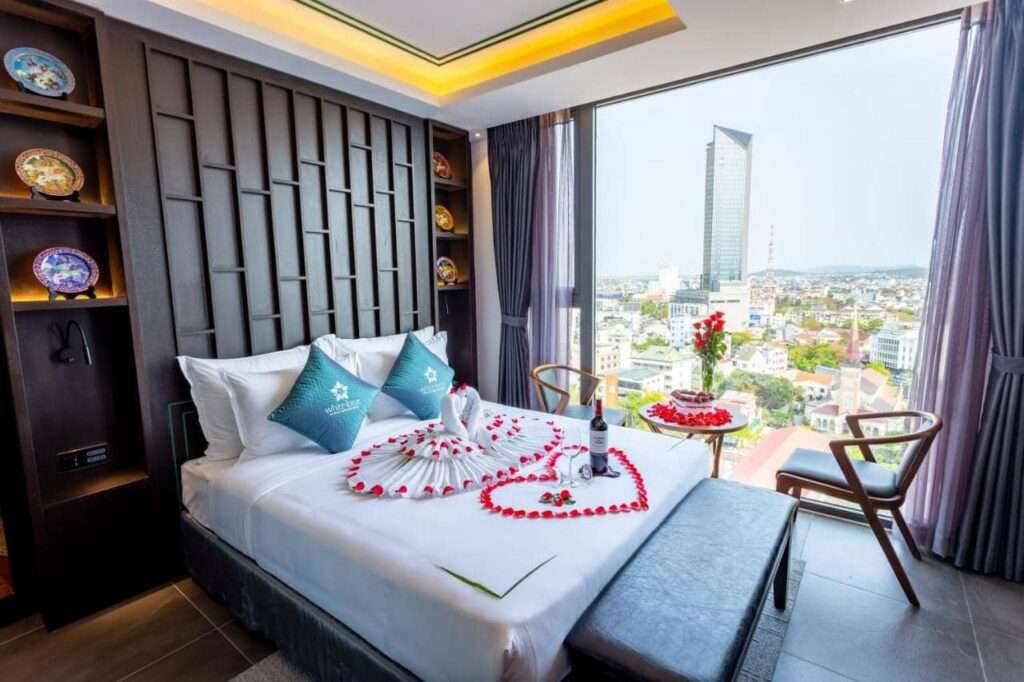
Capital of Quang Tri province: Dong Ha
If you’re setting your base at Dong Ha to begin your exploration via a scooter, know that choices are limited.
Options include a two-star Hoa Binh Quang Tri Hotel or the four-star Sai Gon Dong Ha Hotel. The latter has better reviews but looks retro.

Conclusion
The Vietnamese Demilitarised Zone was definitely one of the highlights of my two-week trip. While the tour I took was half-day with only two sites relating to the War, they contributed to my knowledge of the Vietnam War. Walking through Vinh Moc Tunnels and reading about the lives of the people surviving through those tumultuous times were truly eye-opening. It was also a good comparison against the Cu Chi Tunnels I visited a year earlier.
Armed with a clearer idea of the Vietnam War through my Vietnam travels and research for these blog posts, I headed over to neighbouring Laos later in the year to learn more about the effects of the war in this land-locked country. Find all my Laotian travel adventures here.
Tips
- Bring sufficient hydration. It was so hot; we were drinking like dehydrated hippos. Tip: get yourself a thermal flask and fill it with iced water!
- Have sunhat, sunscreen, and shades ready. Protect yourself from the sun!
- Carry a portable handheld electric fan or foldable Asian fans. You could order them beforehand via my links, or buy the manual fans from the night markets.
- Wear light and airy clothes. I wore those light elephant long pants that you can get from night markets since I was planning to visit the Basilica.
- Arrange for a private ride early. I learnt that our driver came from Hue the day before, and stayed the night in Phong Nha to fetch us.
- Have cash ready. Cash is king for tickets and food if you’re DIY-ing the trip. I don’t see any ATMs around. And Quang Tri isn’t particularly touristy, so I’d expect facilities to be less well-maintained than places like Hue.
- Food. We didn’t stop for food as we had a big brunch on the farmstay before leaving Phong Nha, and an early dinner in Hue thereafter. You could ask your driver for a local spot for lunch.
- Bookmark the stops beforehand. I like to do that so I’d know our current location, and catch something interesting along the way with the map.
